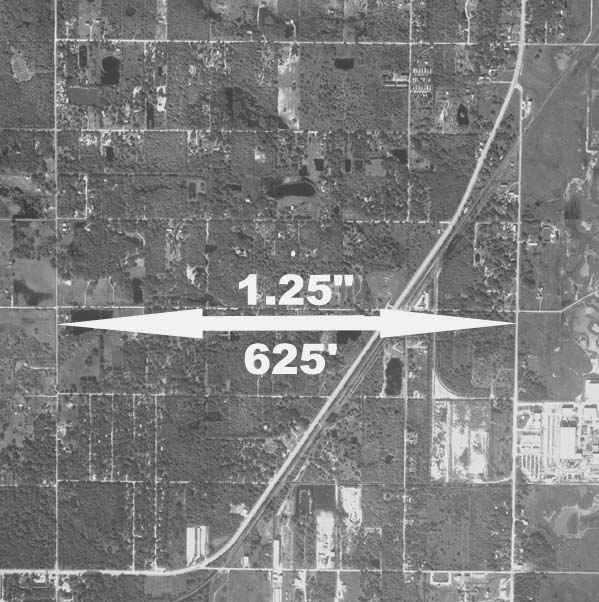In the picture to the left, the actual measurement of the area between the two roads on the image is 1.25 ".
The actual measurement of the same area as measured on the
ground is 625 feet.
To calculate the scale of this image: divide 625 (actual real life measurement) by the 1.25 (distance as measured on the image ). The resulting numerical value is the scale of the image.
Scale is written this way: 1"=500' +/-
(note: adding +/- to the end of the scale acknowledges that this is only a close calculation.) We use 7.5 minute series USGS topographical quadrangle maps to calculate the actual ground measurement. |


